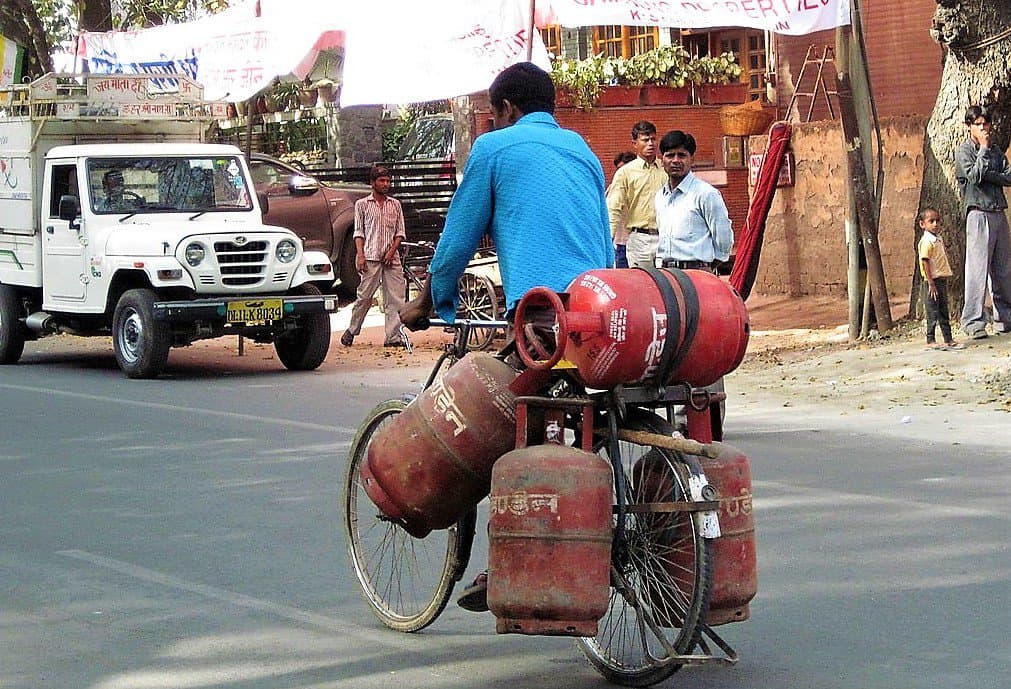Fun fact: Cooking oil, especially the widely used Sunflower oil, has seen a big jump in price because of the Russian-Ukraine war. Why? India consumes roughly 2.5mt of sunflower oil annually. And much of this is imported from Ukraine. India only produces 50,000 tonnes of it. The war has disrupted that entire trade.
So here’s a thought. Incentivise urban communities and farmers to take to growing sunflower. That could lead to being more ‘atma nirbhar’ and a big ‘vote for local’. And who knows, the process may even create jobs. A commodity desperately needed by millions of urban workers across the country.
Ukraine and Russia are also major sources of wheat production. India too, where wheat is the major crop in the entire Hindi belt and the staple diet for much of its population. Till two months back, India claimed it had plenty of wheat to feed its people with enough left over to export.
Suddenly a few weeks back, wheat prices in India jumped by around 13% and the government hurriedly banned all wheat export. There is still no believable explanation for this.
Setting fire to fuel!
Fuel prices have for long been a contentious and opaque issue. Increase in its price is always conveniently attributed to global factors and now the Ukraine war. Not surprisingly, petrol today costs well above Rs 100 a litre.
Which has left auto and taxi drivers with a double whammy, higher operating costs with no corresponding rise in income. In fact, recent media reports have indicated an even dire predicament: loan collectors forcibly repossessing their vehicles.
But the biggest whammy to consumers in recent weeks has been the huge hike in natural gas pricing. Public transport using CNG is suddenly not looking economically viable. While a domestic cooking gas cylinder now costs a little over Rs 1000. Resulting in the centre’s much touted free first cylinder scheme leaving those who get the first one free unable to pay for the second one.
Matching the increase in cooking gas prices is the rise in prices of just about every essential item of daily consumption: cooking oil, vegetables, fruits and other staples.
Read more: Price rise forcing Bengaluru’s poor to change their cooking and eating habits
So for the consumer, here are the choices: Use public transport, walk or cycle more to work or wherever, though that will be a good thing. Cook less and eat less or change your eating habits, a less pleasant option. Definitely avoid fried stuff and look the other way when you see your favourite eating or vendor haunt. And most important, hang on tightly to whatever money you earn.

And so, that’s all we do?
Wherein lies the rub. You and I can probably manage with a little belt tightening and frugality. But for the urban poor, meaning daily wage earners and their families, who comprise a large chunk of any city’s population and have to deal with uncertain and irregular incomes, the unprecedented price rise of recent weeks will inevitably mean having to go hungry more often and for longer periods. For the only economising they can do is in their home and food budgets as other expenses like rent and electricity remain the same.
Maybe it is just luck that India is not seeing the kind of street protests over shortages and price rise of cooking oil, LPG and other essential items that neighbouring Sri Lanka has had. But hunger is a dangerous beast which, as history will testify, has led to revolution and war. Those in power would do well to seriously ponder on how people who don’t know where there next meal is coming from would react to spending thousands of crores on a bullet train which they will never get to use. Nor help put food on their table.
Also read:
- Budget 2022 offers no urban job scheme, but promises 60 lakh new jobs
- Opinion: Rising economic burden on the urban working class widens rich-poor gap
- Editorial: Five key steps to jump start a job scheme for urban workers
- Inflation+recession=Poverty+high prices. The corollary: Hunger
- Will hunger pangs among migrant labour lead to anger on the streets?